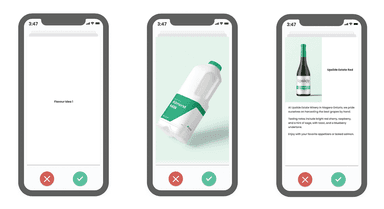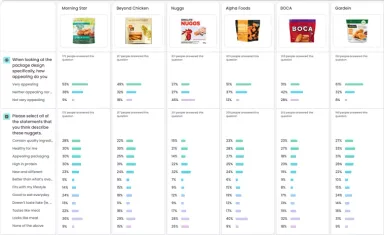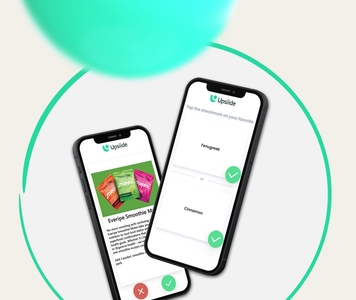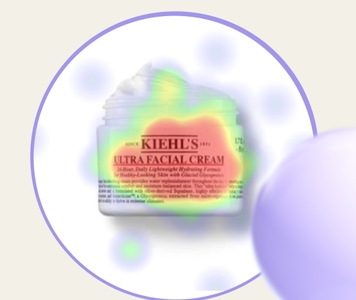It’s difficult to innovate for many reasons. Once you get your head around how to structure your innovation goals, you’ve got to source ideas for innovation. And once you’ve done that, you’ve got to choose and prioritize the right ones. That’s where idea screening comes in. And we’re going to tell you exactly how to set up an idea screening study.
Steps to setting up your idea screening study
1. Define goals
Ask yourself: what do you want to achieve with this study and why?
For instance, if you’re looking to launch a new drink flavour, one of your goals would be to see how your promising ideas for new flavours perform against flavours that are already in-market. This goal will help you stay focused, choose the right questions and plan out the length of your study too.
2. Develop hypotheses
Some aspects of the hypotheses can come out of your preliminary desk research, and some will definitely come from your experience. If you’ve been working in the industry for quite a while or know your consumers well, you are likely to have a hunch about what will work best. Based on your knowledge and historical product data, come up with a few critical assumptions that you can validate through the research.
3. Plan your idea screening study
Think of how you’ll set up a study that adequately addresses these hypotheses or questions.
Modern survey building tools allow you to use a variety of formats to present your ideas. Depending on the goal of your survey and the complexity of the ideas themselves, some of the ways in which you can display your questions may include:
Text - the most convenient option if you want to introduce a product concept, present a message or a claim for packaging, or describe product features; it might be the best format when you don’t have a visualized concept to hand, or you want to ensure respondents aren’t swayed by branding or packaging.
Images - an image is worth a thousand words when testing CPG branding, benefits, and packaging. Photos of product concepts can translate your idea clearly and simply.
Video - videos are great when you have a story to tell; they are more engaging than text and images which might lead to a higher participation rate.
It’s worth bearing in mind that you should select one format to use for all of your ideas. You might introduce bias if you switch between formats.
Finally, plan out each section of your study and order it in such a way that limits bias. Creating a good survey is always about creating a good respondent experience. Make sure that your questions aren’t too long or complex. Structure the questions in a way that won’t confuse participants or skew their responses. For all the info, check out a recent article we did alongside our research team.
Upsiide offers a variety of different ways to present your ideas when screening them - here’s an example of what you might expect with a platform like ours.

4. Get going!
You’re all set to start testing your ideas. Make sure to carefully select your audience parameters, adding demographic filters and advanced targeting if required. This will allow you to filter and create subgroups of respondents according to age, gender, region, occupation, buying behaviour, etc.
Once you’ve gotten your results, compare them to your initial hypotheses. Were they proven out or did you discover some surprising insights? Idea screening is a great way to confirm or disprove your assumptions, but oftentimes it also reveals things that you might have never thought of before.
This is when you decide which ideas you’d like to further assess against success metrics.
Assessing ideas against success metrics (idea refinement)
To understand whether a handful of your ideas are worth pursuing, you’ll need to assess them against your business’ indicators of success. Think of them as KPIs (key performance indicators), a type of quantifiable performance measurement that assesses the success of an organization over time.
This is all possible through Upsiide’s Idea Split feature, read on to learn how.

Things to consider when setting up your idea refinement study
1. What kinds of question(s) should you be asking about the ideas?
Creating an idea refinement survey will be a walk in a park once you understand which questions to include. The right questions can help you get deeper insights into your target audience’s preferences and motivations.
We’ve compiled a list of questions that you could ask consumers. These, of course, can be edited or customized depending on the purpose of your study.
Overall reaction - initial reaction to the product and interest in the idea
What is your first reaction to this product?
How unique is this product?
How useful do you think this product is?
Would you tell people about this product?
Idea components evaluation - what consumers think about the components and characteristics of the idea
What do you like about this product/idea?
What do you think could be improved?
How would you describe this product/idea? - select all that apply
What are the benefits of this product/idea?
Competitors - awareness of other products or brands
Do you think this product is better than what’s available in the market right now?
Do you know any other similar competitors' products? Tell us in your own words.
Use cases - in which situations consumers would use the product and frequency of use
What brands within this category have you purchased in the past three months? Write down what comes to mind first.
Why do you usually use a product like this?
How often do you purchase products like this one?
Price evaluation - price sensitivity
How much would you pay for this product?
Why did you choose this price range? Tell us in your own words.
Buying response - likelihood to purchase
Would you purchase this product?
How frequently would you purchase this product?
Where might you buy this product?
Do you believe in the idea behind this product?
2. How do you know what a ‘good’ insight is?
Writing questions is only one of the components of creating a survey. To evaluate the concepts and find a few good ideas, you need to have some sort of criteria to compare against - those are called benchmarks.
Benchmarking is a process of comparing the performance of your ideas between each other, in-market competitors, or industry standards. This process allows you to understand which innovation ideas or concepts have real potential for success (based on your business’ goals).
Generally, benchmarks help you compare ideas based on:
Strategic fit - Does this idea fit with the business’ profile and objectives?
Market potential - Does your product adequately fill the gap in the market you’ve isolated?
User need - To what extent does your product satisfy the needs of your target audience?
Purchase intent - how likely is your target audience to purchase your product?
Uniqueness - How original and exciting is your idea?
Product recall - To what extent do consumers remember or recall the product or brand?
There are dedicated companies that collect industry-specific data for benchmarking. Alternatively, you can create your own benchmarks according to past internal data.
It’s worth noting that in research, the terms ‘benchmarks’ and ‘norms’ are sometimes used interchangeably, but they aren’t the same thing. In market research, norms are industry-specific data points collected over time, helping researchers determine whether their idea meets the standards of ‘good’ in context.
As innovation insights software moves forwards, and more and more competitors arrive in-market, we’re of the opinion that using real-world benchmarks make more sense than research-specific norms. Upsiide allows you to benchmark your ideas against in-market competitors, and the results data is fine-tuned to be predictive of in-market realities.
For example, when a smoothie producer Everipe was researching whether their target audience would be interested in their new product concept, they tested their products against other brands that were already in the market. Upsiide showed them that their products won both in Interest and Commitment - meaning that consumers both liked the brand and would buy it over other (similar) brands in the market.
After you got the results of your idea screening study and chose the best one...
…you are ready to start your product development process and consider pricing, packaging, creative, and messaging.




